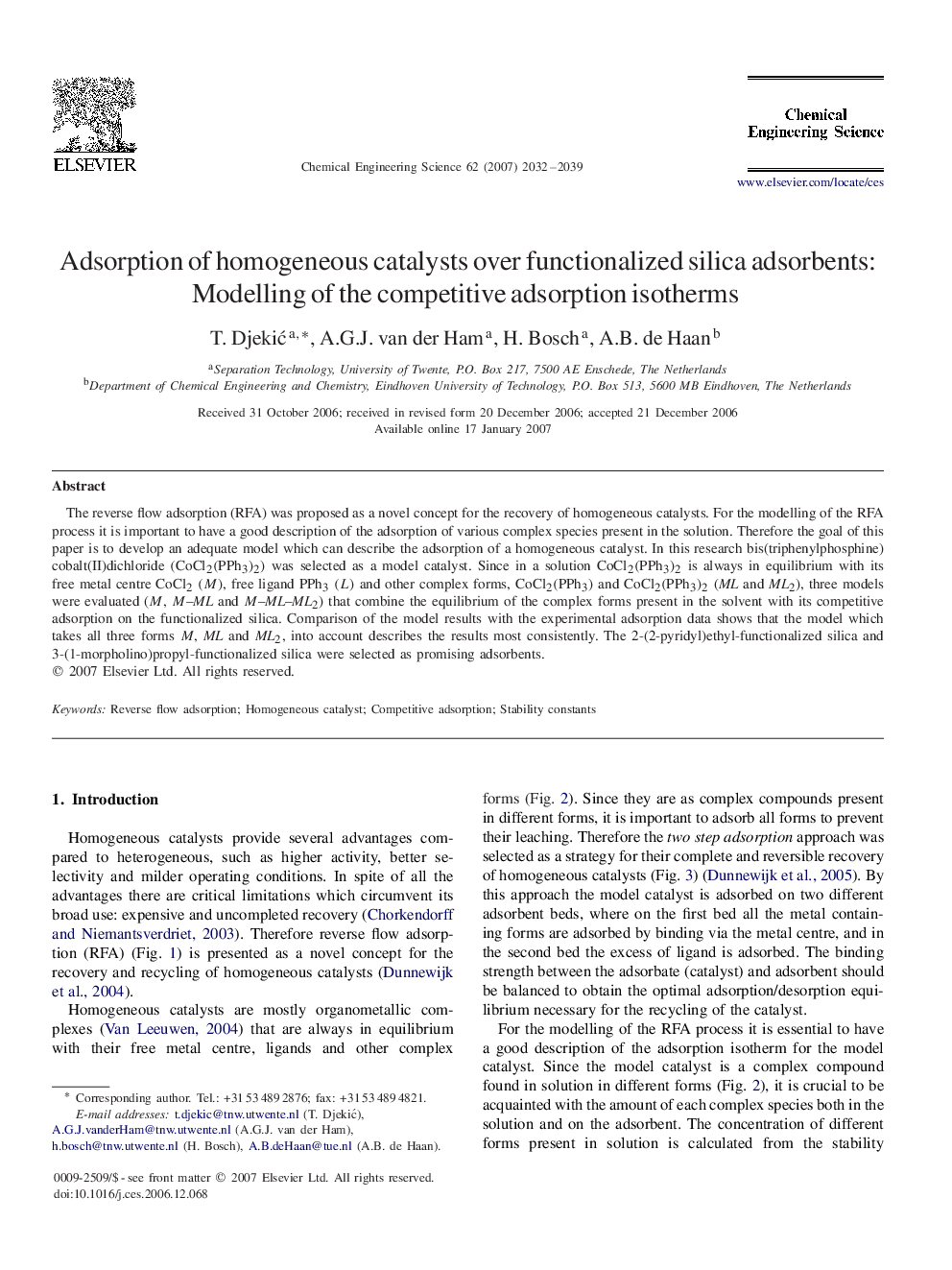| Article ID | Journal | Published Year | Pages | File Type |
|---|---|---|---|---|
| 160193 | Chemical Engineering Science | 2007 | 8 Pages |
The reverse flow adsorption (RFA) was proposed as a novel concept for the recovery of homogeneous catalysts. For the modelling of the RFA process it is important to have a good description of the adsorption of various complex species present in the solution. Therefore the goal of this paper is to develop an adequate model which can describe the adsorption of a homogeneous catalyst. In this research bis(triphenylphosphine) cobalt(II)dichloride (CoCl2(PPh3)2)(CoCl2(PPh3)2) was selected as a model catalyst. Since in a solution CoCl2(PPh3)2CoCl2(PPh3)2 is always in equilibrium with its free metal centre CoCl2(M)(M), free ligand PPh3(L)(L) and other complex forms, CoCl2(PPh3)CoCl2(PPh3) and CoCl2(PPh3)2CoCl2(PPh3)2 (MLML and ML2ML2), three models were evaluated (MM, MM–MLML and MM–MLML–ML2ML2) that combine the equilibrium of the complex forms present in the solvent with its competitive adsorption on the functionalized silica. Comparison of the model results with the experimental adsorption data shows that the model which takes all three forms MM, MLML and ML2ML2, into account describes the results most consistently. The 2-(2-pyridyl)ethyl-functionalized silica and 3-(1-morpholino)propyl-functionalized silica were selected as promising adsorbents.
